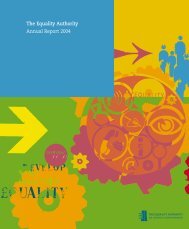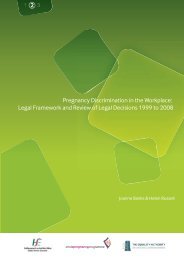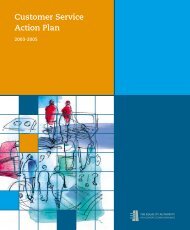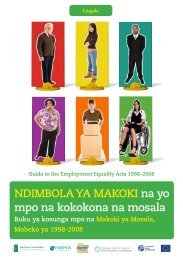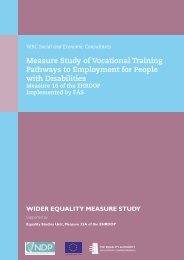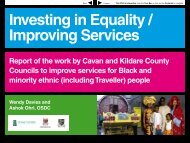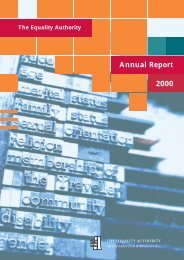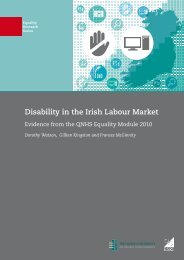Pregnancy and Employment: A Literature Review - Crisis Pregnancy ...
Pregnancy and Employment: A Literature Review - Crisis Pregnancy ...
Pregnancy and Employment: A Literature Review - Crisis Pregnancy ...
You also want an ePaper? Increase the reach of your titles
YUMPU automatically turns print PDFs into web optimized ePapers that Google loves.
<strong>Pregnancy</strong> <strong>and</strong> <strong>Employment</strong>: A <strong>Literature</strong> <strong>Review</strong><br />
Conclusion<br />
This review has drawn together a wide range of national <strong>and</strong> international literature that has examined women’s<br />
experiences at work during pregnancy <strong>and</strong> their subsequent return to employment. <strong>Pregnancy</strong> is a pivotal<br />
point in the intersection between family <strong>and</strong> work, <strong>and</strong> women’s experience during <strong>and</strong> after pregnancy has<br />
important implications not only for their current well-being (psychological, physical <strong>and</strong> financial) but also for their<br />
longer-term labour-market prospects. Research on pregnancy <strong>and</strong> employment also provides insights into the<br />
mechanisms behind deep-seated gender inequalities in the labour market. Comparison of women’s experiences<br />
across countries also highlights the important role of policy (both family policies <strong>and</strong> employment regulations) in<br />
mediating the effects of childbirth <strong>and</strong> childcare on women’s employment.<br />
Studies of formal pregnancy-related discrimination cases taken through the courts or tribunals, together with<br />
surveys of women’s experience during <strong>and</strong> immediately following pregnancy, results from surveys of employers,<br />
<strong>and</strong> experimental evidence all stack up to a convincing body of evidence of unfair treatment of a significant<br />
minority of women in the workplace during or after their pregnancy. This treatment covers a wide range of<br />
situations including dismissal, losing out on promotion, missing out on pay increases, alterations in other<br />
conditions, unsuitable work/workloads, <strong>and</strong> unpleasant comments.<br />
While the experiences cut across a wide variety of occupations, sectors <strong>and</strong> types of women, the research<br />
presented here does suggest that certain groups of women are more vulnerable to this type of discrimination.<br />
Groups with higher risks include:<br />
• Women who have been in their job for less than a year<br />
• Those employed in the private sector<br />
• Women working in small firms<br />
• Those working in organisations without flexible working arrangements<br />
Higher-educated <strong>and</strong> higher-earning women are more likely to report pregnancy-related discrimination in the<br />
surveys, but the statistical analyses of outcomes show that this group are better protected from deterioration in<br />
earnings on their return to work <strong>and</strong> from occupational downgrading.<br />
Discrimination during pregnancy has tangible outcomes for many of the women involved. Many of the situations<br />
described result in direct financial loss for them, in addition to the emotional stress that is likely to come with<br />
such experiences. The medical literature also illustrates the negative effects of poor working conditions on<br />
pregnancy outcomes. Shift work, lifting, st<strong>and</strong>ing for long periods <strong>and</strong> a heavy physical workload have all been<br />
found to be associated with pre-term delivery <strong>and</strong> babies that are small for gestational age. Physically dem<strong>and</strong>ing<br />
PAGE 46




